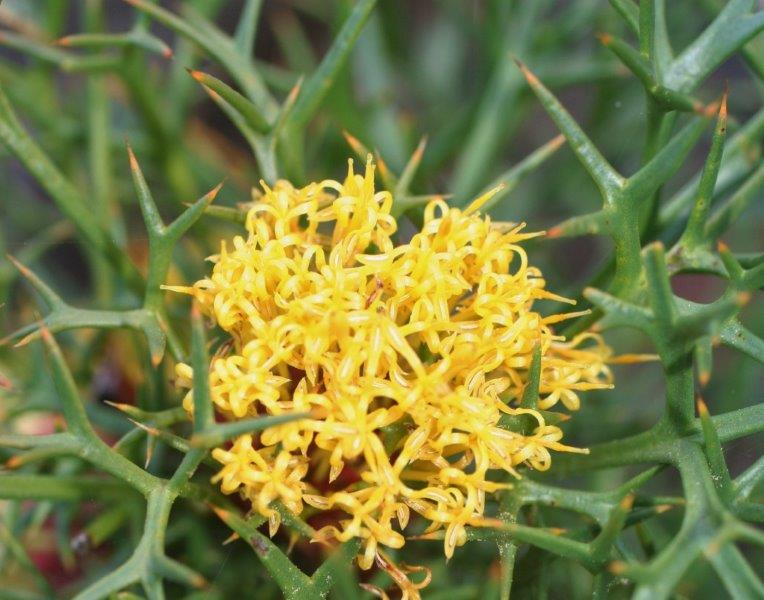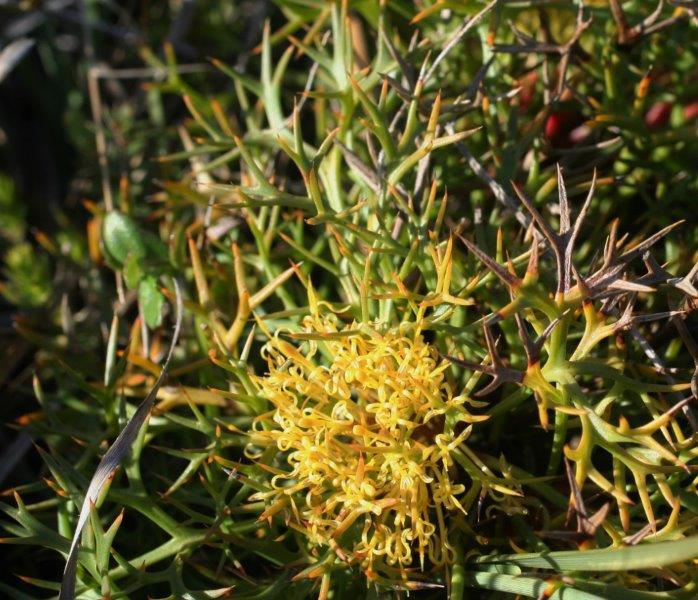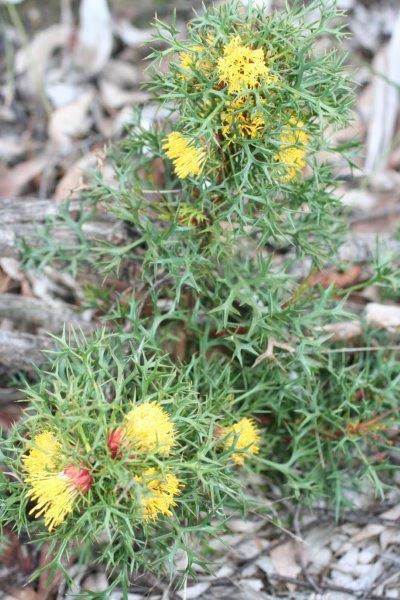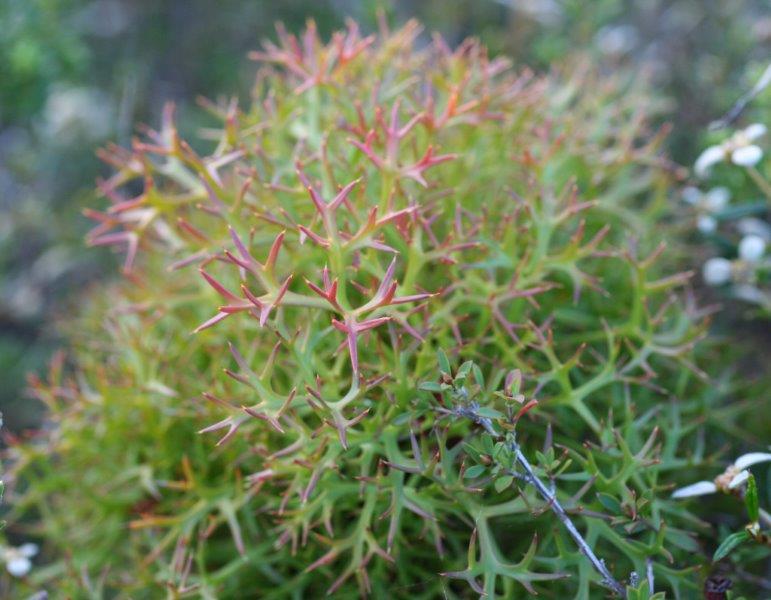



A prickly small, often rounded shrub that is common in vegetation types with sandy soils. Along the Jan Juc clifftop it is confined to Coastal Heathland toward Bells Beach and areas further southwest.
Leaves are deeply pinnatisect, pungent and flattened and dividing into two or three segments.
The name Isopogon comes from two words Isos meaning beard and pogon meaning beard which is in reference to both the hair tufts at the apex of the tepals (flower structure) and to the even length hairs surrounding the mature seed- in this case a nut. The species name 'ceratophyllous' means horned leaves.
Flowers are terminal, sessile (no flower stem), globular, yellow, and at their peak in spring but can begin in winter and persist into summer. These are followed by circular cones bearing several nuts.
This plant is well adapted to fire and can re-sprout quickly from a woody lignotuber (swelling just above ground level containing food reserves to assist the plant with nutrients when it is without foliage).
The two sides of the leaf are different colours